|
My friend, Carlos Gonzales, up in Minneapolis challenged his friends to tell stories about their experience with race in America. Too often we are shouting slogans and sound bites at each other, and not stopping to hear each other’s stories. Mine never seemed to be an American story, having grown up in India and gone to an international school, Woodstock in the foothills of the Himalayas. I am American and lived here now for 45 years and still feel a little Desi (a person of South Asian birth or descent who lives abroad, while I was not born in India I went when I was one, however, my father, grandmother and great grandmother were all born in India). The comedian Hasan Minhaj (https://www.youtube.com/watch?v=i_FE78X-qdY) in a recent youtube presentation kind of called out all the American Desi community (which includes the expat Desi folks like me) to stop thinking they are not part of the story of race in America. So here goes my attempt to tell my story of discovery of white privilege.
What I love about India is it’s diversity. But not all diversity is dealt with in a healthy way. There are divisions over language, region, religion, class, gender, age, and uniquely for India, caste. As a kid I was pretty clueless about such things. Which, by the way, is one of the first signs of privilege, because if you are from any group, such as caste, it defines your every movement. Oh, I was aware that it was a bummer being a girl in India. I hated the groping in crowds and the cat calls, the misogyny I experienced was benign compared to what many women experience. I had a strong mother, who taught me to be strong. I had little to fear. (Again, privilege removes your fear of your place in society....and often replaces it with plenty of other fears that plague the privileged soul about that dangerous world out there, the unknown.) Let me digress a bit by telling my Dad’s story. He was born and raised in India and started his college years at Allahabad University in India. There his Indian friends told him that he could not join them in the “Quit India” protests. On campus he was their friend, but on the street he was white and represented the British and they would have to beat him. Only then did he think of himself as white. He realised, he was not Indian (by race), he was not British, and the only group that felt outside like him were the Anglo-Indians, but they also were not like him. Being white, is such a social construct. In India in the 1940s it meant being English or British, even if you were not. My family is German American, but we have lost what it means to be German here in America, though it is more of a diverse country than India (and designed that way). We check off "white" on surveys. But for most of its history great efforts have been made to wipe out our ethnic identities in America (one of the reasons I struggled with the American education system and decided not to be a teacher, something I regret that I didn't stick with to be an influencer of a broken system). African-Americans (Blacks) were predominantly brought here to this country against their will, unlike my ancestors who came for "opportunity". "Black" became a social construct as their identity as West or East Africans was deliberately and completely wiped out of them, they no longer spoke their languages from the regions of Africa where they came, from their tribes; given names of the people who owned them and in many cases "fathered" them. For us German Americans, perhaps the largest immigrant group from Europe spread across America there was a more privileged story, for we came to own just a little piece of property or to run factories in cities like Milwaukee. We came because we were too conservative or too liberal for the Federation of German States, and are diverse in our thinking, but held together for a long time by language and place of origin. Germans came since the beginning of America, the radical thinkers came after 1848 and there were other waves as America wiped out the indigenous peoples and settled through out the midwest and mountain states. Until World War II (not one) did many still go to church services that were held in German and read German-language newspapers. But both World Wars, fought because of German expansionism, were the death toll to our German identity for those Americans of German descent. We are just white-Americans now, and despite a period of extreme prejudice against our Germanness have merged into the privilege of being white. Not that I understood much about my German roots, or American roots, or even Indian roots (five generations have lived most of their lives there). When I returned to America to attend college at 18 years old I had one very eye opening experience my first semester at the University of Wisconsin in Madison. I began school the mid-year. And January through April were mostly spent trying to survive the winter going from one class to the next. By May everyone was outside! I suddenly realised I was at a major university of 75,000 students, and couldn’t figure out why that made me miserable. One day I was walking on Park Street next to the Humanities building and ahead of me I saw a group of Black Sorority sisters. My heart leapt for joy; I was so glad to see them. Of course as they passed my silly white grin with disdain, I realised they weren’t “my people”. But I felt like they were. I suddenly realised what was making me miserable. I wasn’t used to white crowds. They scare the b-jeepers out of me. I was use to crowds in India on trains at the bazaar at a Mela; there are always people around everywhere you go in India, I was used to being in a sea of color, not a sea of white. I spent the rest of my college years learning about racism, classism and diversity in America and India, and I hung around mostly foreign students to feel “at home.” My favorite song that I use to sing to my friends back then was: "This world is not my home, I'm just a passing through." My life has been spent trying to figure out how to be a responsible citizen in this world, "in the world", without becoming a "of it." And I am constantly reminded that the world, the society I live in is in much need of transformation, of redemption. But the harder lesson is to discover how much I am co-opted into the world around me and that I too, or I especially, am in need of transformation. I believe it is my "white privilege" that makes it hard for me to see that I need to take steps to move into the world and life of the other. I have choice of which world I will live in. To this day I still am not comfortable in all white churches or even mostly white, because of what I am familiar with. I do go there to support my family, or other reasons.You definitely won’t find me in a protest of white people, even if I believe in the cause, and only have been to a Reggae concert cuz that was diverse enough for me. I hate the fact that Sunday is the most segregated time in America, as MLKjr pointed out. My last few years in Miami I went to a black church, since I was living in a black neighborhood. The pastor really wanted me to become a member. I wondered how many whites were members of the African Methodist Evangelical denomination: yes, I know there are whites in Africa too. I realised that I was not accepted by everyone at church. I understood why. Many people lived all week in a white dominated world and this was one place that was their own, where they could be free to be themselves. Only a few resented my presence. But I told my pastor that I was only going to be in the church for a season and that it would require me a true life-long commitment to stay and be part of the reconciliation that the spirit of God wanted for Christians. Some black move to white churches to help break the divide, very few whites have dared to commit to this. I was willing, but had another calling to another marginalized people that are in need to be reconciled to God, each other, to their nation and to outsiders. But it made me aware that for those of us who can choose where we want to live (there is rarely red-lining for us) that we rarely choose to live incarnationally (among the other). I was actually dismayed that I could only virtually attend the Black Lives Matter rally this Sunday that began at that exact spot where I had my whiteness revelation. I was saddened to hear that other white and hispanic churches did not join the African American Christian leaders of Madison, and held separate prayer walks, rather than join in. How can God's Spirit work to unite us if we don't gather together? Anyone who knows me, knows I try to break out of and disassociate myself from privilege, I tend to gravitate towards the marginalised. My kids even accuse me of loving the spirit of poverty a little too much. And I laugh because as much as I pride myself as having lived for so long at the poverty level, I have been so privileged, I am so wealthy, I have access to networks and safety nets and resources and relationships that can only be seen as privilege.* And most of those networks, safety nets, resources and relationships are white….just like me. I tried to be a connector to connect those without such privilege to the ones so readily available to me. Until I realised that was also coming from my position of privilege: I am here to help you. More and more I know that I need the other to help me, to free me, to make it possible for the Great Reconciler to do the impossible work of truly reconciling us who are divided by race, class, gender and politics.. When I began really studying, about a decade ago, my family’s history with India have I began to understand my own white privilege. Like me, my ancestors tried to be connectors for the Adivasi (tribals) to resources like education and economic development. As I came to understand their limited perspective and prejudices, I began to become far more interested in the resilience of the Adivasi themselves. What were their resources, their networks, their safety nets that has helped them survive a long lasting attempt to wipe them out and take over their land? I began to understand what networks, safety nets and relationships I had that put me in a more privileged position from others and how I had to stop and listen and learn from others. It is what I have learned in my various community organizing efforts to find the local leadership and to build community from the grassroots up. An approach that too often dominated by privileged whites, I see it a lot in Madison. I have seen it work the best when it is run by the people themselves, with different kinds of leadership (not as hierarchical) and organization (such as BLM). It is sometimes hard to do things a new way. But the definition of insanity is doing the same thing the same way and having the same results. I have to set down my whiteness that I take for granted and listen and learn to those who are crying out. As a Christian I also see that is how God works. He doesn’t even take his privilege as God for granted and humbled himself and came to live among us. He hears the cry of the downtrodden, the blood of Abel cries out to God who heard the cry of Ishmael, the cry of Rachel weeping over her slaughtered children, Jesus wept for a city like Jerusalem knowing well that it will go through so much strife and never live up to its name as the city of peace. I am no longer an 18 year old naive white girl. I know a lot more now, and know that being given more, more is required of me. I am grateful to my current pastor, Alex Gee of FOL, who preached about Peter and Cornelius today. Reminding me again that it is not a story about the conversion of an outsider, but about the further conversion of a born-again, spirit-filled, Bible believing Christian, the founder of the Church: Peter. He needed to realise that he needed to set aside the law with its commands and regulations (systems and mentalities) that had divided Jews from Gentiles, men from women etc, etc. A law that God himself had imposed to set a people apart, but it had created a wall of hostility and Jesus broke that wall down. But just like Peter, it takes some major transformation for us to live it out. Yes All lives matter, yes we are (or can be) reconciled to each other by God....but it is a life long effort to live it out as if it were so! We are in constant need of transformation, and we must not hide behind our privilege to not move out of our comfort zone and be a part of the change that is comin' down the road. Will we show up to be part of what God is trying to do in this country: to heal, redeem, strengthen, and reconcile people to himself and to each other. In all that is happening these days: pandemic, economic crisis, racial disparity, starving migrants, locked up migrant children, pollution of our air and seas, domestic violence, human trafficking, and on and on. I realise that I am privileged because my heart isn’t broken enough! I don’t feel the pain. In fact I avoid feeling pain…..….Maybe that’s why I am down on my back for over a month, first with a cold, then a back injury, then vertigo, now a dis-functional thyroid. Pay attention and feel the pain, listen and learn. Lay down your privilege like Jesus did. ------------------------------- *Note I am mostly talking about generic privilege. Because I know too many Hispanic and even black, and people, such as Indians in India, that are unable to recognize that their privilege may be giving them a different perspective on this whole race and privilege discussion. It is important to step back and check out your own privilege, it may be in an a arena....for example if you were privileged to get an education or to be literate. My greatest privilege is that I am a Christian. As a child of God that is a huge privilege and a huge responsibility to properly represent my Lord and Savior (not to be a good little Christian white girl)
1 Comment
Yesterday I was catching up with an Adivasi Christian friend asking how they were doing during the Covid 19 pandemic. They described some of their difficulties, and some of the things people are doing to deal with it, and then added, "But we are wondering how we are going to celebrate the Holy Days, such as Easter!" I was reminded of how Easter is celebrated in Jharkhand amongst the Adivasi Christians. It was truly the most wonderful Easter I had ever experienced. The people gather at the church before sun rise on Easter morning and procession to the grave yard and celebrate the promise of resurrection with the ancestors who have gone before them by decorating the graves with whitewash, candles and flowers. It is a community celebration. Sad to think that this year such an important celebration for this community would not be held, I answered: "I guess we will have to celebrate it like Jesus' disciples did. Locked up in our own upper rooms."
Think about it, they were isolated from the world. In some cases, such as with Thomas, separated from each other. They were fearful of what was going on, what would happen next. Fearful for their lives, fearful for how their association with (exposure to) Jesus might impact their loved ones. They were forgetful, so that when two of them took a walk to get away from it all (on the road to Emmaus) Jesus showed up and had to remind them of everything that has happened in the world since the beginning of time, reminding them that they were all called for such a time as this. Those two guys were heading back to "business as usual" and they were reminded, from now on things are not going to be normal. "Behold, I am beginning a new thing!" We may not be able to congregate for easter, but we will celebrate it, by experiencing what it was like (maybe just a little bit) on that first Easter, in lockdown in our own upper rooms. We will need to be reminded about humility, mercy and justice that God requires of us, as we become his hands and feet, mouth piece and ears, for those who are suffering far more than we are. We are going to find that eventually we can go out, like Peter and John did when they eventually ventured out to the temple. They told the man begging on the side of the road, "We don't have any money, but this is what we do have." And they shared not only a message of hope, but got the man up on his feet, "singing and shouting and praising God." Those of you who have the resurrection hope inside, you know this is a time to "let go and let God" (to use an AA phrase) this is the time to say" "I'm here Lord, use me.". This is the time to listen, to respond, to be imaginative, to be bold. You can do that and stay well, stay safe. There are so many little ways we can move outside of ourselves and our isolation and truly celebrate the hope of the abundant life that was promised to us through the death and resurrection of Jesus. We may not be able to gather on the streets to shout in our King of KIngs, Lord of Lords, my Christian brothers and sisters. We may not be able to gather for our sunrise services. We may not fill our churches buildings. There may be other uses for our time and buildings and networks that can help those who God so loved that He died for. We are the church, not a building. It may be that some of our church buildings will need to be converted into quarantine facilities, it may be that some of us will have to be on the front lines helping out in hospitals, it may be that we need to welcome in strangers who have no place to stay, it may be that we have to start doing some of those difficult things that Jesus suggested while he was walking on the earth. It is most definitely a time to pray, not just to mutter and peep, but to really confess our own complicancy, really cry out for mercy, really weep for the pain others are suffering, really ask for "God's will to be done here on earth as it is in heaven." And......yes......to celebrate Easter! It seems to me that a giant reset button is being pushed as many people quarantine themselves out of obligation or preference. When China shut down, the satellite images showed a dramatic decrease in pollution, the canals in Venice Italy have turned clear and reviving sea life, parents are spending time with their children, young people are making choices on behalf of the elderly. I generally live a very isolated life, when I am not traveling, so nothing has changed for me, except suddenly I feel I am in community (there are others in the same boat as me---social distancing of course). Governments are addressing the pandemic in military terms, as they are prone to do. I fear that it can turn authoritarianism into greater authoritarianism, every state will look more and more like a police state. But in general I don't only look at what governments do, but what is happening on the grassroots. Its like a rock, when you pick up the solid unmoving mass there is life swarming underneath.
I hope each one of you can be the change you want to see. Your motivation may be out of fear or out of grace. May all of us have our love button reset. So I have, as I alluded been in isolation for some time. For a while I was struggling to get into some kind of rhythm, and increasingly I have become more productive. I am starting my new novel and also working on an event (actually a couple of events) that will be in 2021. Since returning from India I have been analyzing what the writing workshops that I held in India were all about, I hope to see the paper I submitted to the Journal of Adivasi and Indigenous Studies be accepted and published in August. The project to publish in India is kind of on hold as I wait to hear from those who I am working with in India. In regards to the novel I am finding that I can write about how I and my ancestors discovered and lived among another culture (as I did in Among the Original Dwellers see website), but the question about how I can authentically represent that other culture is a true challenge. The novel is about a relationship between a missionary women (Doris) and an Adivasi Oraon woman (Singhini). I must do so much more research to get Singhini's side of the story. I am doing a great deal of soul searching about my true motivations for writing about this other culture that I do not "know". Why is it important? In many ways I wish to carry on the legacy of my ancestors, great=great-grandparents. I am concerned about the attack on all minorities in India right now, that is most glaringly apparent towards the Muslims, but will and is spreading to all who are not in the Hindu fold. I am conscious that voicing such a concern makes me a rebel-rouser and puts me in a precarious position. But it is because, even though only an expat. I have a great love for India and I do not wish it any harm, or to self destruct. And so this brings me to the title of this blog. Who is the silent enemy? Who are we opposed to, what are we fighting against? Not to use military terms, but medical terms. Immune systems must be strong enough to fight this Corona virus, the silent enemy. What of our social and moral stamina, is it immune to the silent enemy that can so easily divide and conquer. As I say, these are questions I am considering. Thought since it has been such a long time since I added to my blog, I would share these thoughts. In preparation to my next return to India I am glad for the opportunity to return to the place where I spent most of my childhood. Some of us are so fortunate to have the chance to really live in or visit natural gems. The truth is the whole earth is so magnificently wonderful, there are just plenty of place that have been ruined by humans while others remain pristine and beautiful. When I was 11 years old I had the great chance to visit one such gem: Pahlgam and Dal Lake in Kashmir (these old family photos below do a great injustice to the beauty). I often wonder what they look like now, but understand in many ways it is unchanged. But now things are really changing.and will change fast. Now I love India. It is truly a remarkable democracy, and like any other nation it has its own challenges. For those of you who do not know anything about Kashmir I will give you a very over simplified summary of its history. In 1947, when India gained its independence from the 200 year rule of the British, a lot of things were decided that have continued to cause conflict in the region. The most obvious being the creation of a Muslim state (East (now Bangladesh) and West Pakistan).
Around that time the fate of the beautiful region of Kashmir and Jammu, the northern most region was also decided. According to Article 370 of the Indian Constitution (passed in 1949), this state, that had been a Princely state during the time of British, was given a special status, allowed to have rule itself autonomously (with its own constitution).Over the years details of this Article were changed as both India and Pakistan claimed large swaths of Kashmir.* A few months ago the Modi government dissolved the special status guaranteed by Article 370, claiming that it has held back development in the region. Now the people are under Marshal Law, much like the era of the Emergency in India (1975-77). Beside media censorship and blockage of the internet, children (boys at least) are being separated from the families and other Human Rights violations are happening, and the people of the region have had no say in this decision. Again, I understand that there are always some larger "interest" used to justify such policies. This is seen in various forms in every country, be it self-interest, national-interest, sectarian-interest, corporate-interest or the like. Usually the interests of the voiceless masses are not taken into account, and it results in a lot of suffering and fear. There are big power interests in this region (such as China) and it is easy to quickly condemn a nation for trying to maintain security and vie for power. The politics and economics of the matter I will leave for others to argue. For now I just want to look at the human toll. I am simply asking you to be aware of, and feel the pain of others. WAIT! How can we possible feel the pain of those who suffer all over the world! We cannot hold all that pain in our finite beings. For this reason many decided to worry only about themselves or their own! "I am not my brother's keeper", let alone carer for strangers. There is a lot to mourn in our day and age, almost in every corner of the world. Much to lament all over the God's beautiful creation. Some happen due to the most evil intentions, other are done blindly with no consideration of consequences. I feel for the place and the people. I know it has remained pristine, exactly because of its special status. The suffering of the people, as outside powers and interest fight over it. This has been going on for a long time. It is most aggravated right now. It is interesting that as I get older, I have become less pessimistic. I do believe there is hope for those who are downtrodden. I do believe there is hope for the people of Kashmir and the beautiful land that it is. "Like daylight, the Lord brings forth what is right, And justice as the noonday" Psalm 37:6 It doesn't just happen, people must be filled with love, feel the pain, have a sense that we are all brothers and sisters, committed to truth and justice, persistent in prayer, and advocates for those whose voice cannot be heard. ------- * India will not allow a map of India that does not include Kashmir extending to its northern border. My visit to India has been most enriching. This is the best kind of tourism: to stay in one place and talk and listen to people. My Hindi is getting better with each visit. Though my collection of books to read in Hindi is growing, so I plan to work on developing that skill over the next year. I was glad to get some very good input on my book, but the greatest blessing was to talk with people about their own heritage. There is a certain urgency as people recognize that the holders of the oral traditions are passing on. It was encouraging to see a number of people who wish to form a community of writers to encourage each other in the effort to preserve heritage. We shared various stories we wrote down, stories of faith and courage. I will share a simple example from one of the stories: An old couple who had been the leaders of a Hor tribal community once had run out of food. I young lad came and told them that the leaves of the tree outside their house was good for food. He made them a meal, and when it was cooked, it boiled down into a very small portion. So for this small portion the old man gave a very very long prayer. It was the long prayer for such a small portion that we laughed about, I pointed out it was symbolic of what we were talking about. The old couple had forgotten their indigenous wisdom, that God has provided abundantly for the needs of people. It had to be a young person to remind them that such knowledge was important. The overflowing gratitude for even the smallest effort or portion is very much expressed by the people. The rest of my time was a period of reflection on the importance of the 100 years of autonomy that the Christians of this region are celebrating. Autonomy from outside/foreign administration. They face many challenges as they deal with generational, gender, cultural, political, regional, and socioeconomic differences, and how to follow the way of the Spirit of God. I am so inspired by them and am so humbled by how they warmly welcome me to share in their journey. I think my great great grandfather Ferdinand Hahn who lived here 108-150 years ago would be very happy that I am taking time to pass time with them. I also had good conversations about minority rights and issues (particularly Christian and tribal) in Delhi, where I stayed at the beautiful JNU campus. I had the blessing to witness how Urban Oraon Christians celebrate harvest festival.
I have enjoyed visiting with friends from Ranchi here in the US this past month. Niw I get to go visit again to participate in a conference "Revisiting the Autinomy of the GELC" Stay posted I will continue to blog about the trip and my status in my writing journey.
Here is a summary of the trip and some of my favorite pictures along the way. In many ways I wasn't sure why I was going on this trip. Initially I had wanted to take my kids before their lives got too busy, but their lives got too busy, and so they couldn't come but I decided to go anyway. When I got there I realised what things were very important and special about this trip, for me and for others. MumbaiBecause a dear friend lives in Mumbai, I enjoy having Mumbai be my point of entry into the country. There is nothing like seeing Mumbai with a Mumbaikar, you quickly get a sense of how to navigate those busy and uneven streets and see perhaps things that just aren't on the regular tourist route.....though it is always nice to visit a few of those too. LonavalaHowever when I first arrived in Mumbai there was a break in the monsoon, that had just started and so it was incredibly hot. So my friend and I escaped to the hills, the Western Ghats just outside of Mumbai. There the rain was regular, though not as forocious as it gets later on. Here life is simply and slow and nature does sings making you so aware of the rich abundance of invisible and visible goodness that surrounds us. RanchiI truly love staying at the HRDC (Human Recource and Development Center) Guest House. Primarily because the staff are so delightful and I can just sit in the lobby and meet the most interesting people. I did very briefly go to the "Theologica" or the Gossner Theological College (GTC) and to the GELC (Gossner Evangelical Lutheran Church of Chota Nagpur and Assam). I enjoyed speaking to the staff of the "Gharbandhu" which is the regions oldest newspaper, a hindu publication for the church. We spoke about how I can share pictures and short stories that they can translate and publish. Just before I left, I thought it would be a good idea to print out a copy of the translation work that my father has done of two histories written in old German by two of my great great grandfathers: Ferdinand Hahn and Ludwig Nottrott. [Note as far as we know Ludwig never came to India, but he wrote down this history based on the information sent to him by his brother, Alfred Nottrott who was a co-worker with Ferdinand Hahn. Ferdinand's oldest daughter, Louise, and Ludwig's oldest son, Karl W, married and are my great great grandparents] When I was having this work translated for my own research, I realized how valuable this history would be for the Adivasi people of Chota Nagpur. This may be one of the only and oldest histories. Why it was never translated earlier and put into their hands I do not know. it was most significant that I brought to them these vital histories for them and have asked both the GEL: and the NWGEL to publish these works, and translate them into Hindi. So that more people will know their history. I did not know how well received this gift that I left with the two seminarys would be. It is such a joy for people to have in their own hands one of the most important versions of their own history for the first time. Malar / Lohardaga / ChattiThe last couple of times I spent a lot of time with the GELC and the GTC, staying in Ranchi and traveling out to various outposts such as Purulia, Chaibassa, Jhamshedpur, and Lohardaga. There are still many other places that I would love to see, but I have a feeling I have a long history here and will be returning and have other options to see other places of this 2nd largest Lutheran church in India. For those who don't know there has been a split since the 1970s in the church so currently there is the GELC and the NWGELC, they have a common history and many other things in common, however, they both also have some unique differences. In any case, I had not spent much time at the NWGELC Navin Doman Theological seminary in Malar. So this time I spent half my time there. I was asked to share part of the history that I have learned with them and gave two lectures that I have now shared in this blog (6 parts). Malar is out on the edge of Ranchi in the country alongside a forest that is shared by three Adivasi villages. Again it is very peaceful there. My hosts are recognized as advocates for the community, and people come to them from the village about advise. Once again the students are often singing, dancing and drumming. On Sunday we went to church in Lohardaga, where Ferdinand and Doris lived for over twenty years. (1878-1900). The elders and the youth were very interested to learn from me more about their history. They asked me some great questions and I was really appreciative to learn what parts of the biography I am writing of Ferdinand are important to them. On the way back from Lohardaga to Malar we stopped at a little church in Chatti that was built in 1883. I had mentioned the origins of this church in my lecture and now it was good to see that it was still standing, and perhaps little changed from those early days. There is a huge mango tree that looks as old as the church. I always wish that the trees could talk to tell us more of our histories. Delhi The time in Ranchi and Malar went by too quickly. I flew to Delhi truly dreading the weather and pollution there. For over a month they had very high temperatures and in addition to the worst pollution in the world they were having dust storms coming in from the dessert. But before I got there a little rain had fallen, enough to clear the skies. I've been very fortunate the last three times I've been in Delhi over the past five years that the days I have been there have been beautiful. But I had a very bad cold so I mostly spent time staying in my hotel room at the YWCA and recuperating. I just want to make a comment about the fact that I have been working on uploading pictures off my phone into my Google Folder and writing this blog. The whole time I was in India it would take ten times longer to do what I have accomplished today! I really appreciate the connectivity that I have in this country! And I appreciate why the answers coming from emails in India always seem to take longer. Pretty much the only thing I did while I was in Delhi was to visit Jawaharlal Nehru University (JNU) to visit some social scientists who have also been working on this history of the Adivasi. The campus is so beautiful, a jungle with nealguy deer wandering around and peacocks jumping from the trees and flying across the sky. It was a hot evening and I was weak from recovering, but I really enjoyed not only the campus but also the great conversation. I have been very encouraged that I should be able to publish in India. KalimpongThe tag on to the trip was a week long writing retreat that I took with my friend up in Kalimpong. Five years ago we began to go on these writing retreats and have chosen a different hill station each time. We were anticipating a lot of rain up in this northeastern West Bengal town just on the Sikkim boarder, but it only rained twice during the day the whole time we were there. We spent most of our time writing, but would always have an excursion out either into town or walk out into the hills. It was a beautiful place and I was able to do a lot of editing on my book. Where we stayed would have a beautiful view of the Kinchinjunga range, but we were lucky to get a faint outline through the clouds.
I am wrapping up the two lectures shared with the Navin Doman Seminary. This will be the final post, that I am entering on my final evening in India. ---------- Ferdinand Hahn in Lohardaga (and Suleman Khalko his coworker) would teach what Pastor Gossner used to teach, that you have to have Christ inside you, but you also have to serve, not just by evangelism, but also serving the sick and needy. So some of the people came to them and it was obvious that they had what is now called Hansen’s Disease or leprosy. At that time among the Adivasi it had no stigma to have leprosy, they weren’t thrown out of their homes. They were allowed to stay in the village. Everywhere else in India they were driven out of their family. Yet they came and said that when things are difficult, we feel bad that we are a burden to the family. So they asked the missionaries to help them. This would be about 1878-9. So missionaru Hahn wrote to the Leprosy Mission Society in Scotland, and when he went back to Europe he went to visit them. He wrote that we need to build a community for these people. That is how he built these houses in Lohardaga, very close to their bungalow. And everybody would worship together, the well and the sick together, with women on one side, men on the other, and in the back the people who had leprosy. They always considered that they were one community and so wanted to worship together. 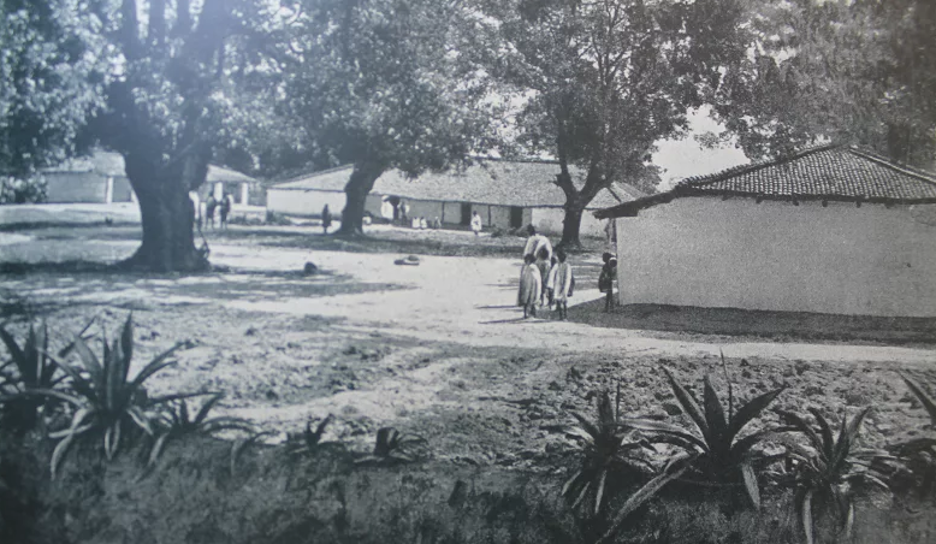 The first time that Ferdinand Hahn ever saw anybody with leprosy, was on the trip coming to India and they had stopped in Colombo, Sri Lanka, and he saw a beggar woman on the side of the road, and he wondered what alienation this person is experiencing. He already wanted to make a haven of hope for these suffering souls. At around this time many of the Adivasi from Chotanagpur were being sent as laborers to the tea plantations (in Assam, Darjeeling, etc.). So in 1900 Ferdinand Hahn went to Assam to see about starting mission there. But while he was there one year the missionary in Purulia died and so he was recalled to go to Purulia because it was such a big institution by this time and there was no missionary there. (Picture) There he found 700 lepers living together in one community, the biggest in Asia. So from 1901-1910 he is in Purulia. And there, unlike Lohardaga, he is only working among the people with leprosy and as pastor of their church. (The Mission to Lepers required a missionary to run the institutions they funded). He had a very nice way of preaching and teaching. He would walk amongst the people like this, and say, Jesus died on the cross for us. Yes, yes! Is that all he did? Then they would all shout, oh, yes, yes, yes. He rose again from the dead. He saved us from sin. They would all loudly give the answers they knew. And if someone were quiet he would turn to them and say, what did Jesus do for you? And the person would stand up and say, Jesus healed me. Or, Jesus brought me here to this place, and now I have a family. It was a very nice time, because they loved these people so much. Yes, they would have to clean their sores, because at that time there was no cure. They created a self-sufficient community, they made their own furniture, they grew their own food. In Purulia Hahn had more access to the British people. And he would tell them stories about Lohardaga. They asked him to write this down. And perhaps if he had not gone to Purulia, he may not have written the Kurukh grammar. He also wrote articles for the Asiatic Society of Bengal. In Lohardaga he had been very busy, but he had been making a lot of notes, but those notes would never have been published. It was because the English who had encouraged him to write to get his knowledge published. And it was at this time also that he wrote for the Germans (in Germany) the history of the Adivasi that I brought here. My father translated it from the German to the English and I brought it here for you. Sometimes we are taken somewhere else, and it is a good thing, although we may not understand until afterwards why it is such a good thing that has happened to us when you are asked to go from the place where you are happy to another place. You may ask why should I go, I am happy here. He was happy in Lohardaga, why was he called to Assam, to Purulia? In Purulia he had time to write! In conclusion, I want to say a little about his family. Above right is a picture of the Hahn Family: These are all his children. Standing in the center behind the parent is Louise, my great grandmother, she was born in Ranchi. The brother, Theo, standing next to her and her sister Marie sitting on right of picture was born in Ranchi. All the rest were born in Lohardaga. Doris and Ferdinand had 13 children, one buried in Ranchi, and one is buried in Lohardaga. . Only one (rather short) time in their whole lives did they live together, able to take this picture. They wanted to keep their German culture, it was very important to them. And this is why they encouraged the cultural development of the people also, because they said that if culture is important to us, if our language is important to us, then it must be important to them also. But the reason they had not been able to live together was because the older children were in school in Germany while the younger children were being born in Lohardaga, so only this one time they were all together in Germany at one time.
When I was in Lohardaga they asked me, how many of the children became missionaries. Half of them did, they all did some kind of work in the church. Louise, the oldest was a missionary i n Chattisghar. Her father helped also start the leprosy asylum in Chandkhuri. Standing in the back was the oldest son, who was a doctor. He came to Purulia for one year and then went to Mexico as a missionary. Marie was here in Purulia as a missionary with her husband Paul Wagner. On the left seated is Frieda, she went to Africa to be a missionary. Gushie standing on the left was in Ranchi as a missionary, and came back between the wars (after WWI).She was married to Martin Prehn. The sons all went to Seminary in America. One son standing on the far right died a few years after this pucture.Behind him on the right this son became very bitter and fell away from the church. And he died in the war, WWI. Interestingly enough, he died on the same battlefield where my mother’s father was fighting on the American side. So on one side my mother’s father, and on the other side, my great uncle. This happens all the time in war. As in the Pakistan-India wars brothers are made to fight each other. It is always like this in war. Yes, only two were pastors.
Before launching into this next part of the 2 lectures I gave at Navin Doman Theological Seminary in Malar, near Ranchi, I just wanted to make a few comments.
Every time I have visited Jharkhand I've had the great pleasure to meet Bishop Nirmal Minz and his wife Parakleeta. Bishop Minz has been a long standing pillar in the Adivasi community. His wife was educated in Germany, and so despite her Parkinsons disease she has translated into Hindi a history that was written by Ferdinand Hahn in 1895 celebrating the fifty years of the Gossner Mission in Chota Nagpur. I look forward to seeing hee important work published along with the amazing photos. Most of the photos I use in my lecture come from that book. I do wish I had spent more time finding out what she has written about the organization of the church. Perhaps there is something more that can be added to what I said in this part of the lecture. Or perhaps there are some points of clarification that need to be made. In this portion of my lecture, but I wish to qualify that more research is needed in this area of church organization structure.
In case you want to read the previous Parts first before this part:
http://www.journeyfromjourneyto.com/writers-journey-blog/part-one-history-talk
http://www.journeyfromjourneyto.com/writers-journey-blog/part-2-history-talk
http://www.journeyfromjourneyto.com/writers-journey-blog/part-3-history-talk-chaibassa-to-lohardaga
http://www.journeyfromjourneyto.com/writers-journey-blog/part-4-history-talk-chatti
Let me break down this part of the lecture into different categories
1. The Missionary (Mission) and the church 2. civil responsibility 3. Catechists 4. Pastors 6 The Pnachayat. 7. annual conference ------------------------------------------------------------------ The histories written in old German, that my father recently translated into English, suggest that Christianity was spreading among the Adivasi, primarily through the people themselves. The missionaries had come and presented the Gospel message of Christ (see photo below left preaching at a Mela), but the people themselves spread the message into remote regions. Then the missionaries ensured that seekers would be well taught what being a christian means (again through the Adivasi Christians) before verifying genuine belief and carrying out baptising. Their work of oversight over the church from the beginning had an ultimate goal that the people themselves would govern themselves and be self sufficient.
Ferdinand Hahn was also concerned about the Civil governance of the people in the community at large (not only the Christians). He played an important role of setting up Lohardaga's Town Council and was elected it's first President. The organization of the council was president, secretary, treasurer, like typical German organization. I doubt many towns have such a structure. In the photo above right you can see in the picture that the municiple government was a representation of quite a diverse number of people who lived in Lohardaga in 1888.
he missionary lived on the mission compound. Christians tended to live in their own villages. On the mission compound (which was often given names like Bethsaida, or Ebenezer, or Patrasburg, etc) On the compound there were school buildings and most of the time a church. The only church for believers to attend for quite a distance. If Christians came to stay near or around the mission compound, but these mission sites, were not "settlements" or "colonies" like in so many other missions. In many places around India, converts to Christianity were rejected from their communities, and so the missionary would create for them a new Christian village. This was not the case among the Adivasi, who followed various faiths in addition to their traditional Sarna religion. They all coexisted together with moderate prejudice. (One cannot say it never existed, but it was more rare than common) From the beginning the missionaries trained catechists to teach the catechism (usually Luther's short catechism). In photo below left, the missionary is teaching the catechists. Then the catechist would go out to the villages and teach those who were seekers. A seeker had to study the catechism for at least six month to a year and a half. The missionary would quiz them on the genuiness of their belief and knowledge of the faith before baptising the people. But when the missionaries counted who was part of the church, they would include the seekers.
From 1871 on the missionary seminary ordained pastors, mostly Adivasi pastors. These pastors in some cases would move to an area where there was a concentration of Christians. In many cases they went to assist the missionary in managing the churches and schools. For those who moved to the villages there was at first a strain between the catechists who were considered spiritual leaders. So it was quickly decided that it would continue to be the catechists work to do evangelism, that is spreading the word and teaching about the faith. The pastors role was to take care of the congregations. If there were up to 12 christians in a village (including women and children) then that was a congregation. Where there were a concentration of Christians a church would be built (like in Chatti).
Pastors were given four years in the Seminary, and then they would do two years in the community, and then they were ordained. Then they were required to meet together in regions once a week, if they can, or at least once a month. In this way the pastors can share with each other, learn from each other how they meet the problems they have faced. Then the Pastors were required that once a year they should take a refresher course of 6-8 weeks. This would be at the time of the Annual Conference when everyone would gather in some place, sometimes Ranchi, sometimes Lohardaga, or different places. When this became so many people that would come and it was difficult to place them, they started having representatives to come, one for each 1,000 members. This did not have to be the Pastor or Catechist, but whoever the people wanted to be their representative from their congregation.. Often the pastors and the missionary had to figure out how to deal with matters of discipline. There was an emphasis that most culture practices were acceptable, unless something is specifically mentioned in the Bible. This included drunkenness, however they had a serious problem with alcoholism. Then the dancing in the circle, or akra, had elements of spirit worship, so they did not allow it as part of worship, but otherwise a cultural practice. They had a little bit of garbar over tattoos, because the Bible says no tattoos, But the people said that this is how we express our position in our community, so after a while it was allowed. Then the Christians started identifying themselves with crosses and other Christian symbols. But I do want to say something about alcoholism. There is the question of discipline in the church, this was another thing that they struggled with. Alcoholism was one of the bigger things that disturbed discipline, but there was also adultery, and things like that. But they had a policy not to expel anyone from the community. It was a very controversial policy, but they said that the reason that had to be done was for the community. They recognized that the person identifies so strongly with the community that expelling them from the community is like throwing them out of the world. The commitment of the church was to restore the person. If the person had any leadership role, they would lose that. Or if they came to church and they were drunk. They would be asked to leave. But they would assign two Catechists to that person, to pray with him, to teach him, etc. If any of you have studied about alcoholism, you know that the habit is very strong, and I think this method got lost because the person didn’t change. The alcoholism was stronger than his will to reform. So in the church, and even in America they are finding that this is a problem. And we find that the Twelve-Step Program is very good because it creates a community for those who are struggling with the same problem
The interesting thing is that when they go to the village level, the Panchayat is very important to each village, and in the villages where the Christians were in the majority, or all of the village was Christian, they would give authority also to the Panchayat to select representatives. So the missionary would always have to meet with the Panchayat first, then with the Pastor and the Catechist, and then with any others. It was for this reason that they had the Pastors do more and more of this work in the village. And I told you the story of Suleiman Khalko in Chatti. This was the kind of development they had, and it was because of this that when the missionaries left, they already had a system in place for self-government.
I was also telling the class about the financial support of the church. They placed all the offerings and the special offerings and put them into a fund, and the at would pay for half of the Pastor’s salary. Pastors were paid Rs.15 a year back then. and the Mission paid for the other half. By this they were trying to teach the congregations to raise all the money needed to run their congregation. But they were concerned, because when you have someone in the village who is being paid a salary, and the rest were working on their farms, this creates a difference in status. But if they didn’t do this (pay a salary) the Pastors would not have enough time (from their farm work) to do all the work, because they usually had several congregations. [the unordained missionary received 40 Rupees a month for himself, Rs.15 for his wife, and Rs. 8 for every child; the ordained missionary Rs.50, wife Rs.20, and child Rs.10, whereupon the former higher value of the rupee came to the aid of the missionaries; FH 1906] Because the Christians and the non-Christians lived together in the villages, and the missionaries had to make sure that there was peace. They had to respect the system (differences they had), For a brief time they got concerned about the sums not being properly managed. So they centralized the fund. But then the problem was that it was no longer a community based effort. Then the people started asking, where is my money, my gifts, going? But by the time the missionaries saw that this was a mistake, they were forced to leave (the country). The people were very generous, but they had a problem. The very first believers liked to give to the Church, because formerly, when they were non-Christians, they had to give to the village priests, and for the sacrifices, it was very expensive for them (but they had to give out of fear). So when they became Christians they were very happy to give. They would rather give to the Church than give sacrifices. The priests were constantly saying, oh, you are sick, you have to give a sacrifice, (and also collected a fee for himself). If you have a wedding, you have to give a sacrifice. Also during the harvest they had a tradition of always having to give. Actually, the new believers, not the missionaries, started the harvest celebration in the church. The missionaries were pleased to see this. The other problem was that when the church had become more established the missionaried wished to teach about tithes, you need to pay a fee for burial, or some other service by the church, then the people objected because they said that the Zamindars are also asking a fee for one thing and another. This is another example of how, if you lose the theological background (godly purpose), which is your thanksgiving offering, you tithe as an offering to the Lord in thanks for all His abundance to us. If you forget that, and it just becomes a fee, that makes it a problem. Some places, such as Takamar became self sufficient early because they had a way of setting aside a portion of rice at evey meal for the Church. After all how exactly do you measure 1/10th of your farm? What is one tenth of a goat or a cow? Let me not forget some unsung heroes of the Adivasi church. Bible women. The missionary wives noted that the true leaders of the home and clan were women. They would teacc, those who were intereste, bible stories. Eventialy through Zinana mission they recieved some literature. So they taught the women how to read. The women could then support themselves by selling the tracts for one anna. Some of the German missionaries were not very supportive of this ministry, but it was a way to educate the community about the faith. It was a way to engage the women in church leadership. Finally, there was an annual conference from 1874 on. As the numbers grew it became unrealostic for all believers to join in the gathering. So 2 representative for every 1000 believers were locally elected to represent the various congregations scattered in hundreds of villages. Minutes were taken in old German by a missionary of these meetings. If we could read them we would learn so much more about church organization and life. (much is available in Berlin archived, however in old German handwriting) It is because of this organization that the church was able to gain autonomy in 1919. As the leaders negotiated with the British government to remain Gossner Lutherans and not Anglican, the people were part of the process. Lines of communication and the ability to vote on such matters had been put in place. Different regions may have been organised slightly different based on local cilture, but all the people had input on these developments, so the British could not deny them Autonomy on July 10, 1919. 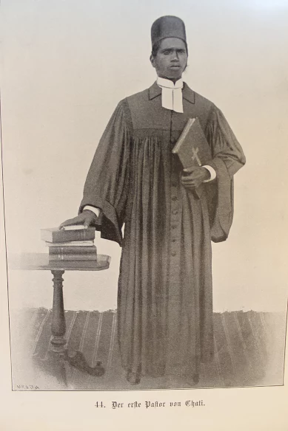 Comments This is the 4th part of the first of two lectures presented last week to the students and faculty of Navin Doman Seminary. i will be breaking it down into smaller parts, for some you may have seen some of this in a post before. but remember much of this is all basically new information to the listeners who were impacted by this story. .................... I have been sharing about Ferdinand Hahn, but I want to give you just one example of how the Adivasi pastors worked and how the churches multiplied during this time of the missionaries. Around 1871, when Ferdinand was running the boarding school, half the students left to go to the Anglican boarding school. So he had to go out to the villages to recruit more boys to come to the school to get an education. One time he entered a village and saw two boys taking care of the goats, and he asked them if they would like to go to school. They said that you have to ask our mother. Now the mother was a widow, so she said I can’t give you both my sons, but I will give you one son, Suleiman. When his mother brought him to tge school she told her son, you can run away any time you dont like this place. But Suleman liked it very much, even though the shoemaker missionary made him wesr shoes. He went to the Boarding School, then he went to the Seminary, but he had a problem with epilepsy. Even so he was passionate for Jesus, and he wanted to go back and work with the Oraon people. So Ferdinand suggested that he come and work with him in Lohardaga. Rev Suleiman Khalko started working with the Christians in different villages, and now in the village called Chatti there were 1,000 believers. Then he took the initiative to remember an old missionary that had been in Lohardaga many years ago, who now was in America, and wrote a letter asking for some money. When he got the money he built the Church in Chatti in 1883. He was only the pastor here a few years and then died. But his congregation loved him so much, when he became sick thet carried him on his bed all the way to Lohardaga in hopes for him to be healed. It was a good hour drive on the car! Not all the churches from the 19th century are still standing, but there are many scattered about chota Nagpur that never had a missionary stationed there, they were run from the beginning by an Adivasi pastor. ---------------------- I had the priviledge of seeing the old church in Chatti that is still being used ny 13 congtegations from surrounding villages. Appatently in Chatti itself thete are no more Christians, necause when the road came through, Adivasi dont like to live near the road, and oytsiders usually come and settle there. One could imagine that life in the church compound is still very much like those olden days. There was an old mango tree that seemed as old as the church. |
2016 -2020These musings include the journey of my writing on the history of my great great grandparents and the travels for research to India, Germany and other places of interest. Archives
June 2020
Categories |
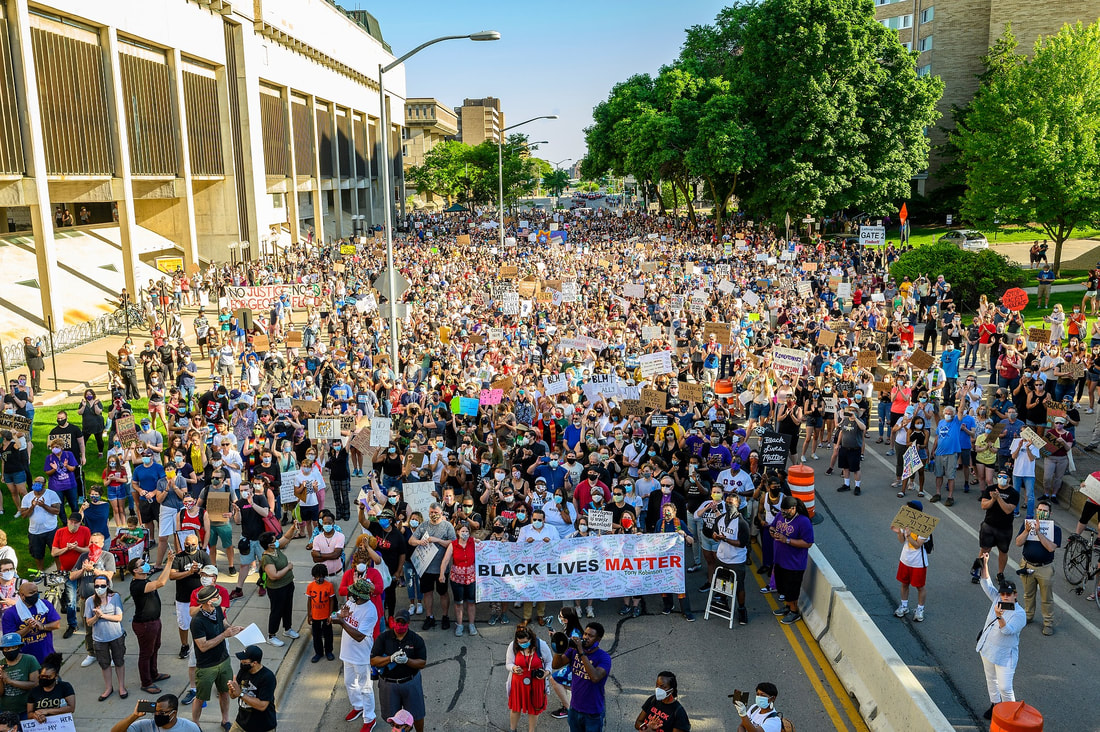
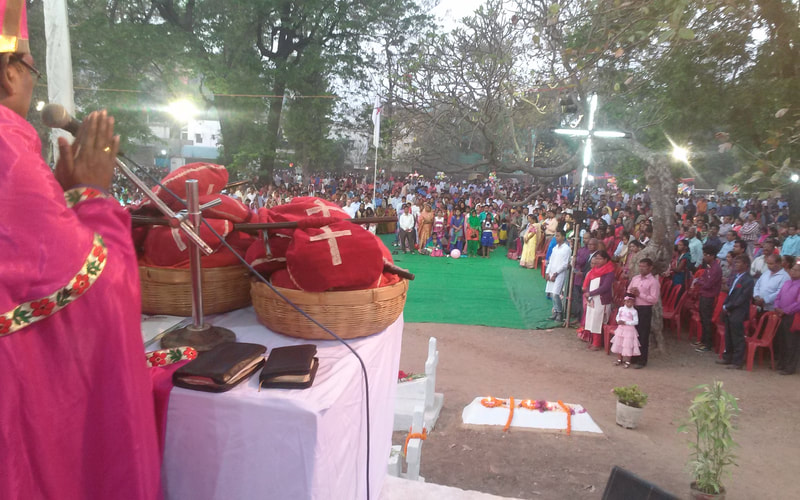
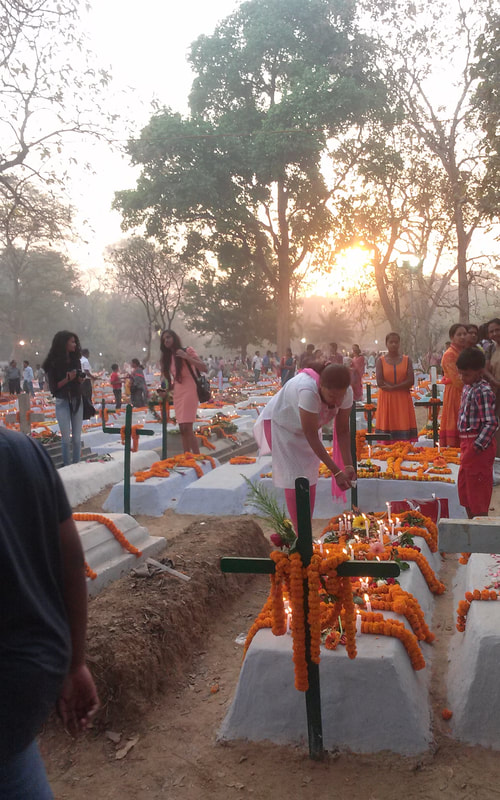
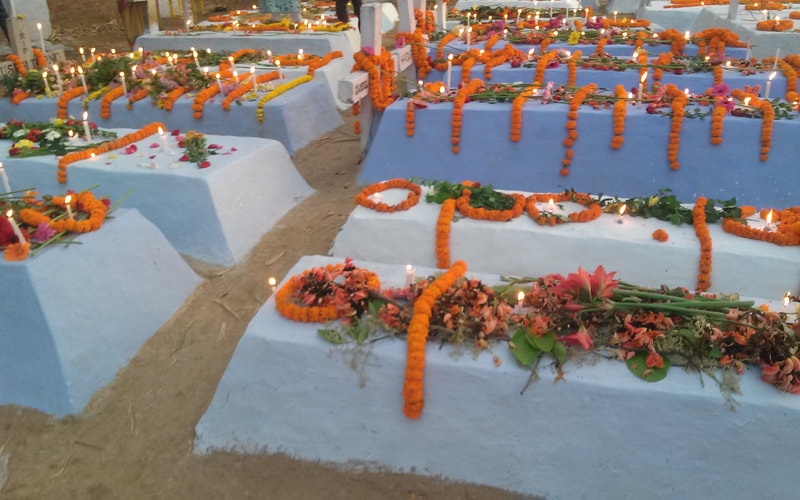
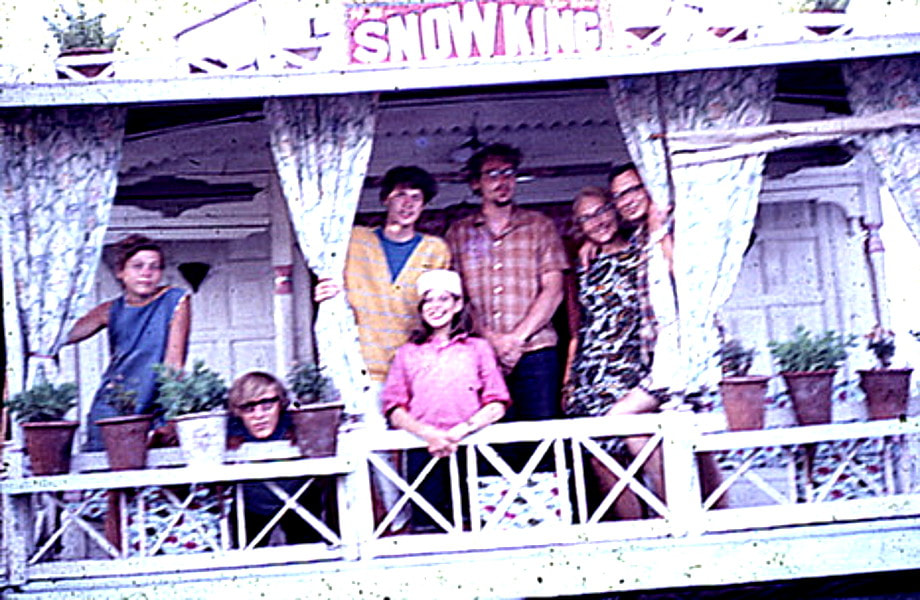
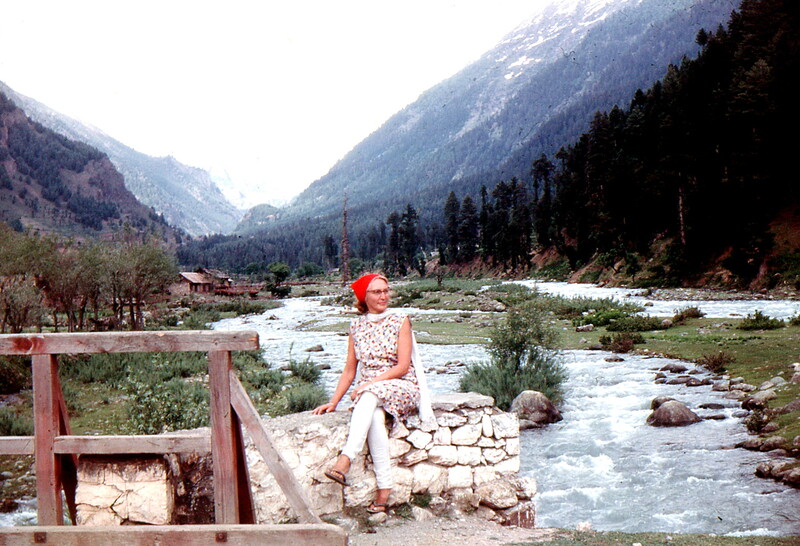
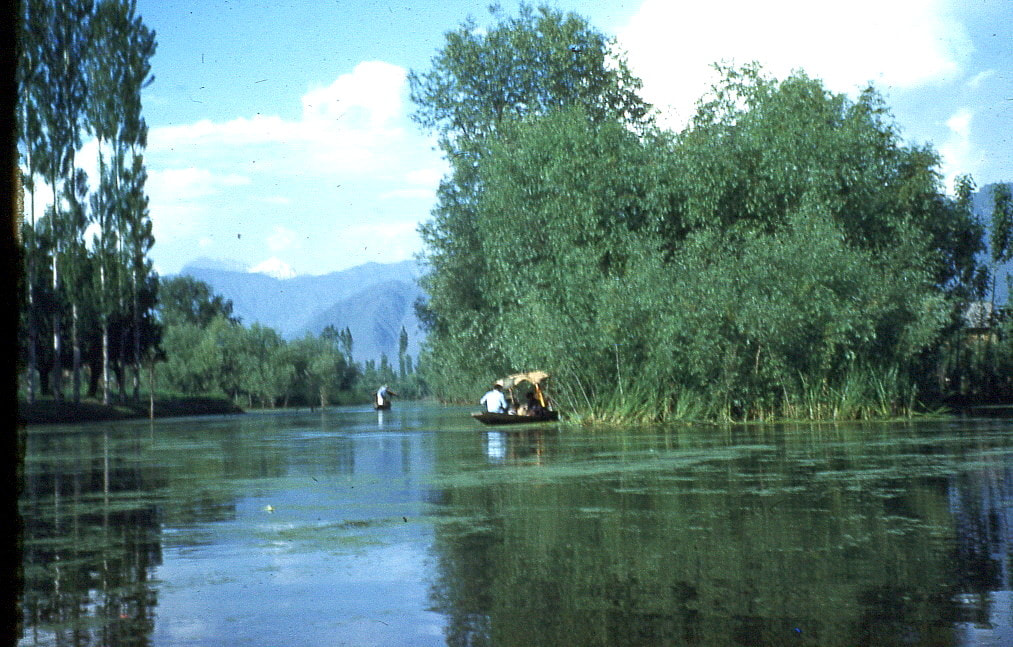
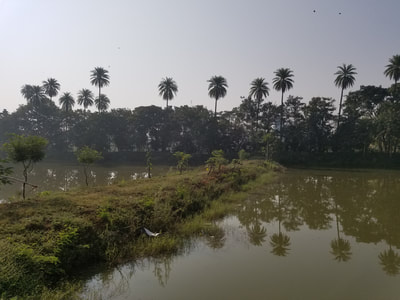

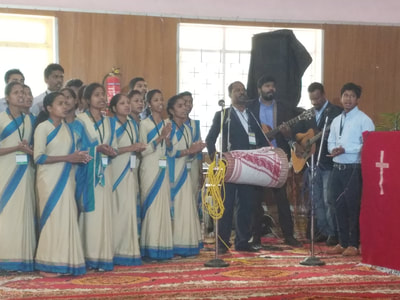
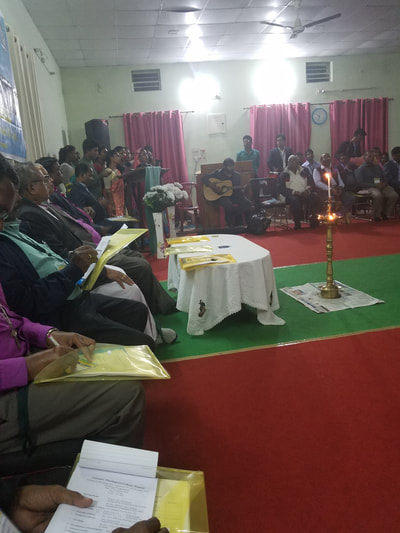
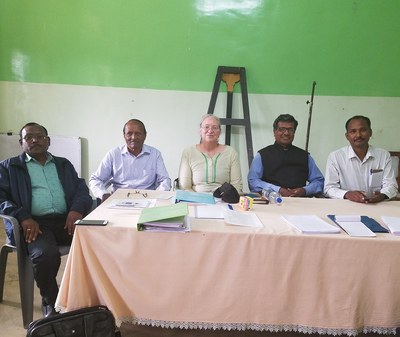
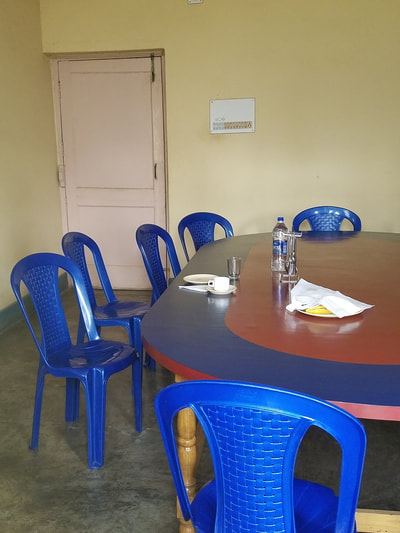
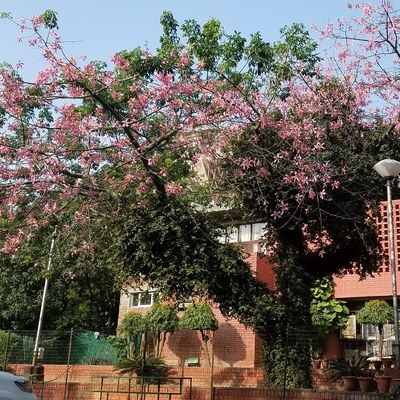

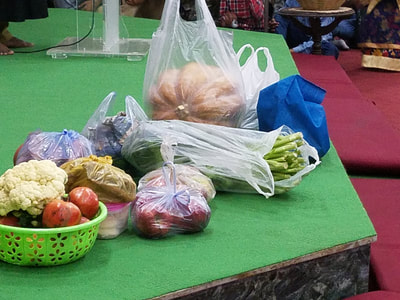
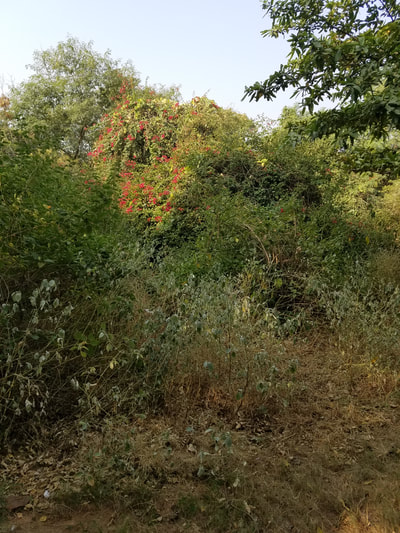
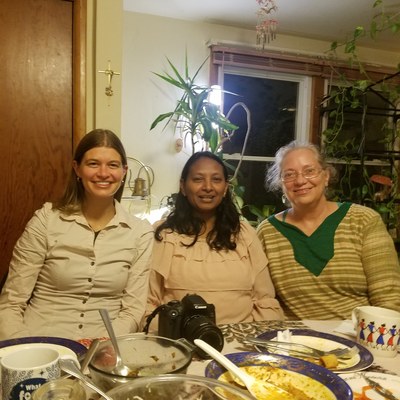
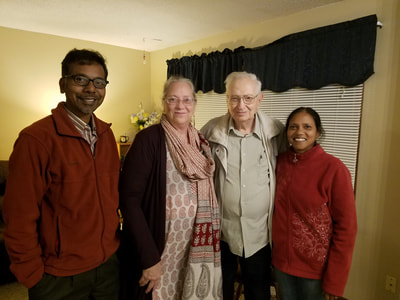
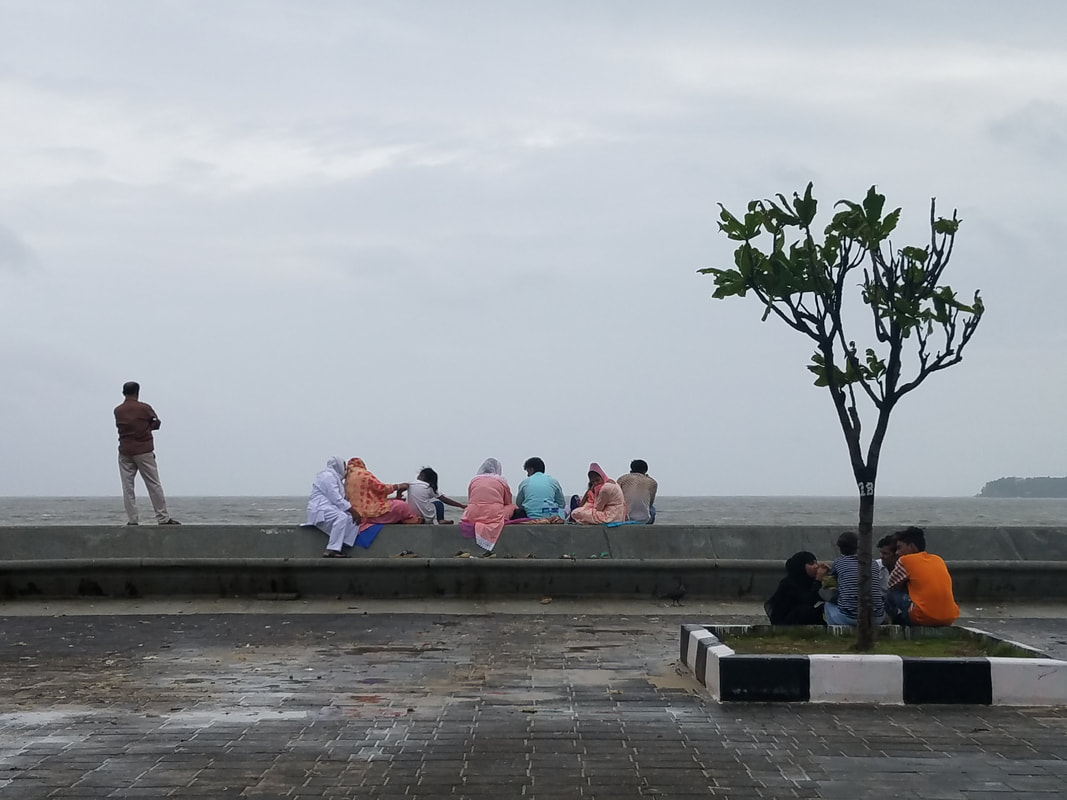
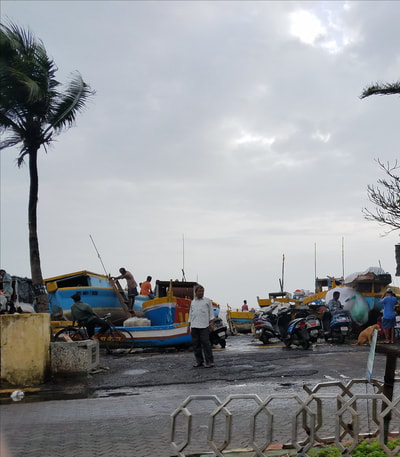
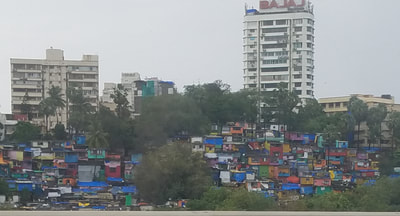
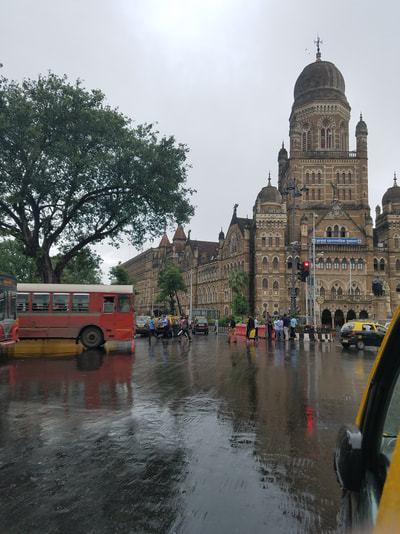
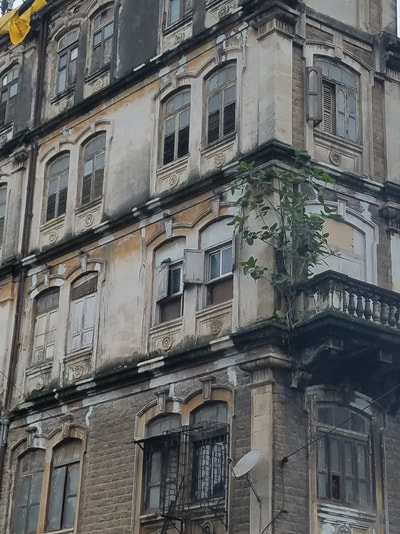
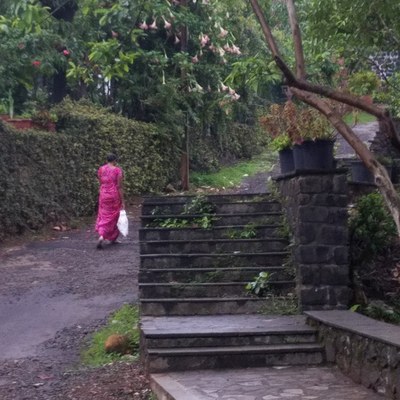
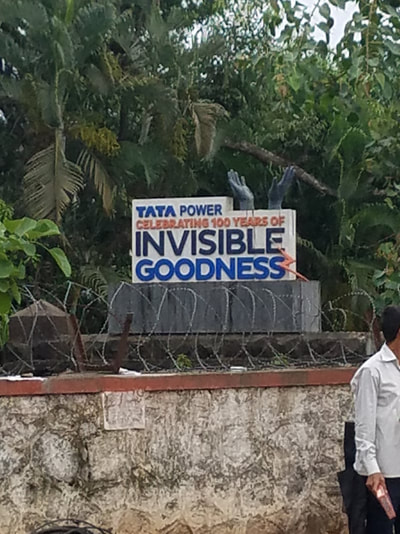
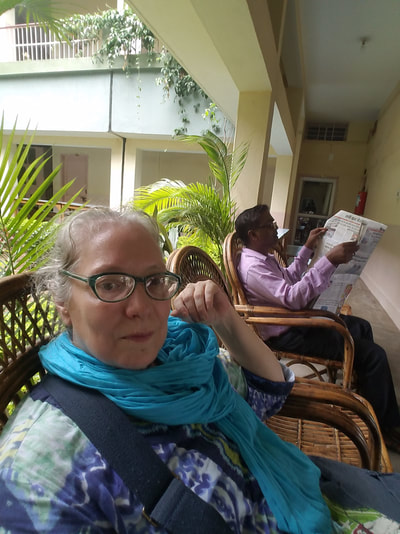

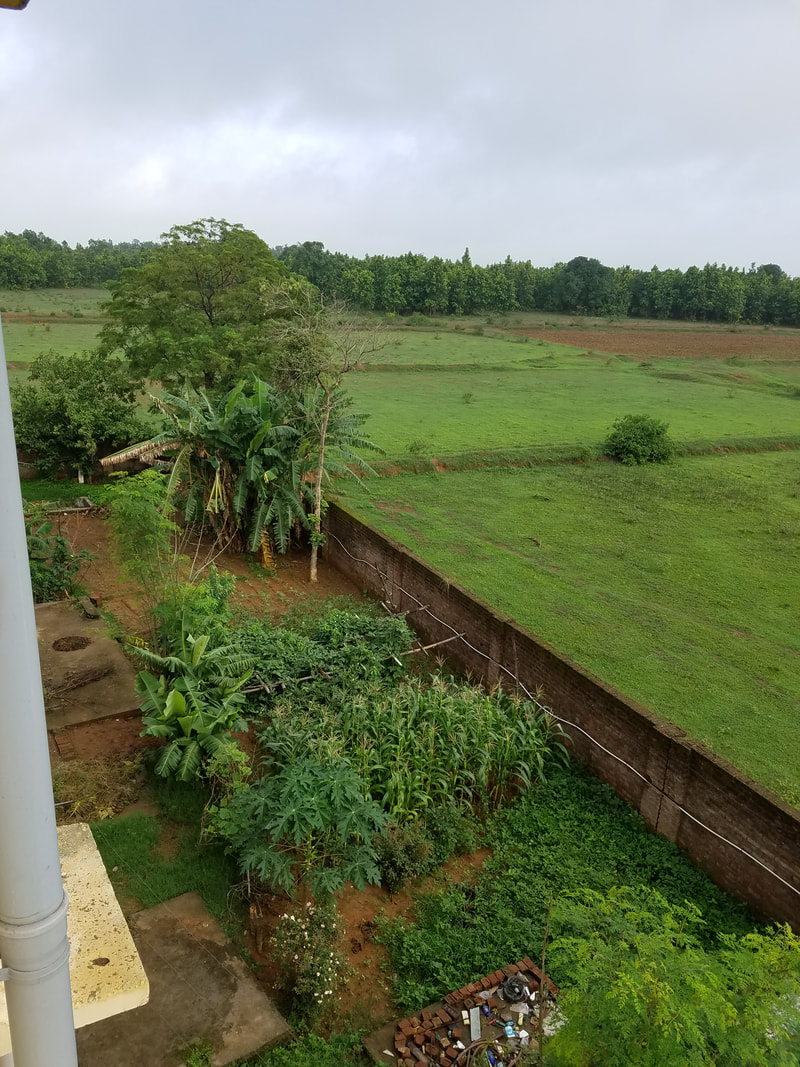
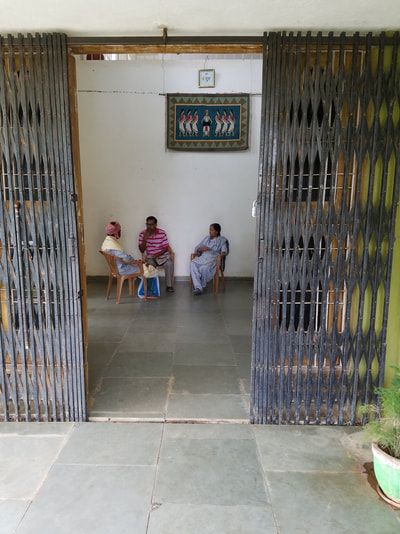
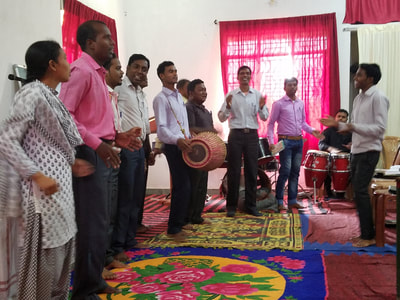
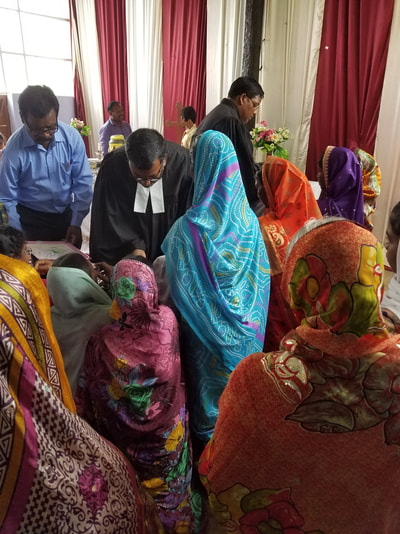
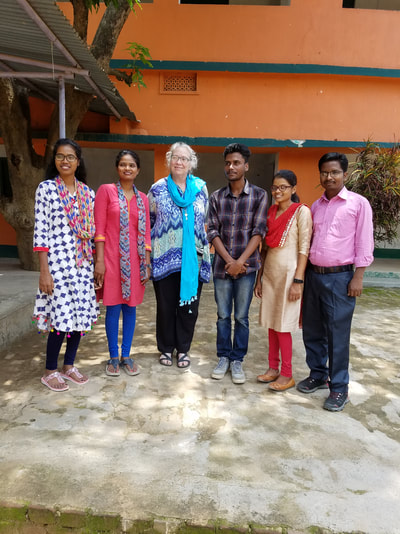
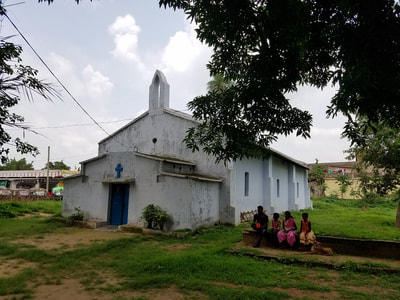
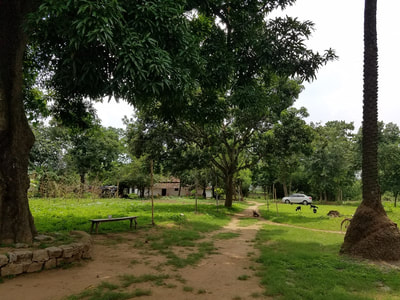
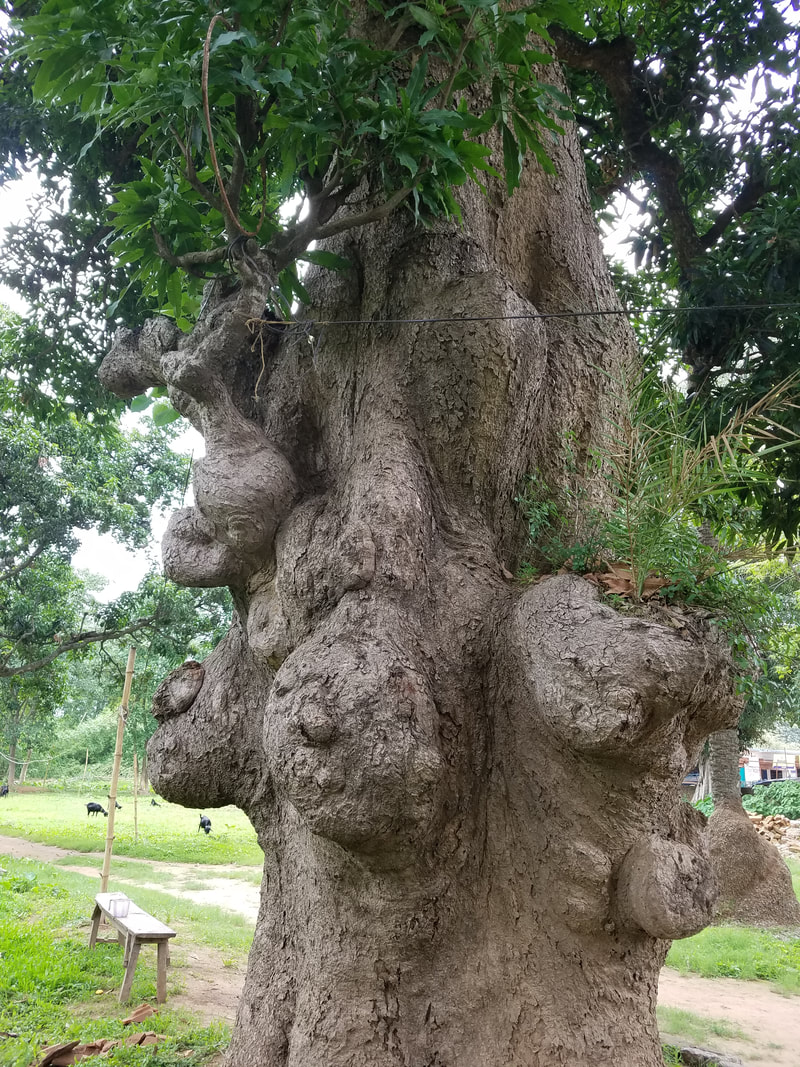
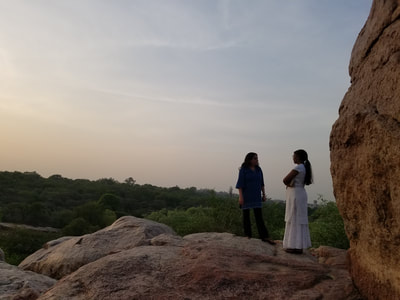
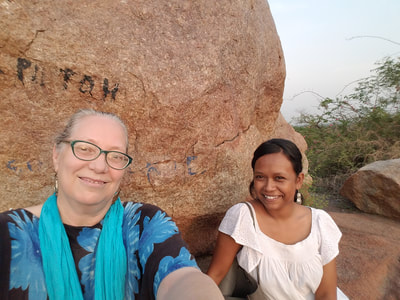
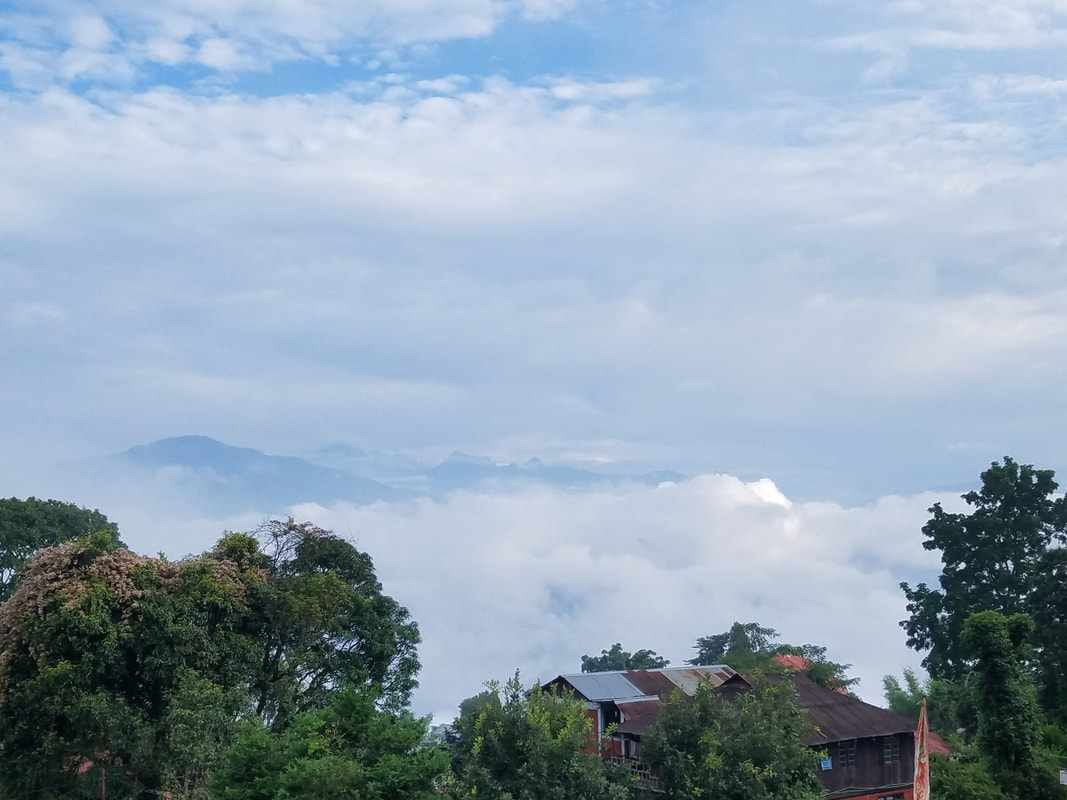
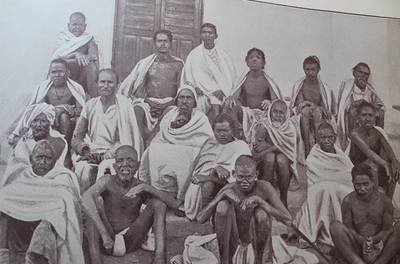
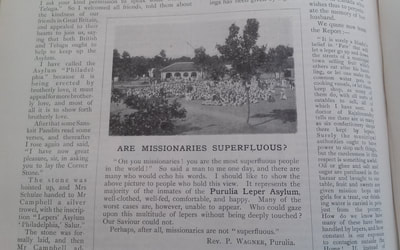
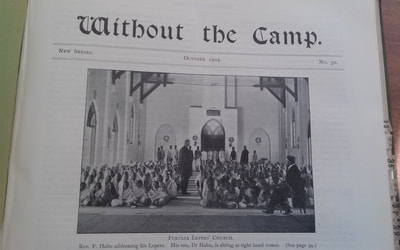
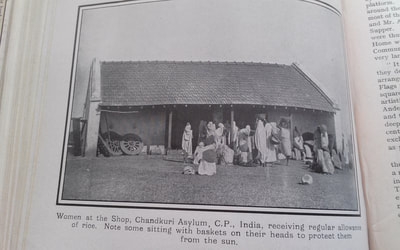
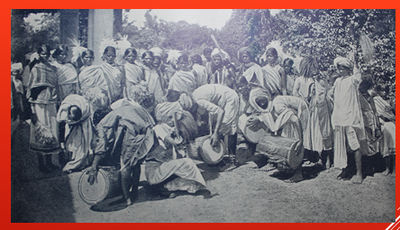
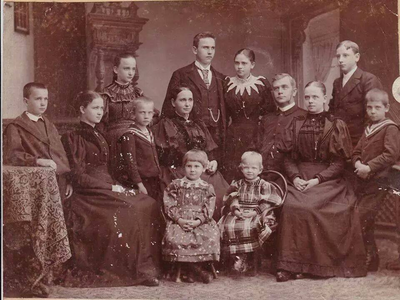
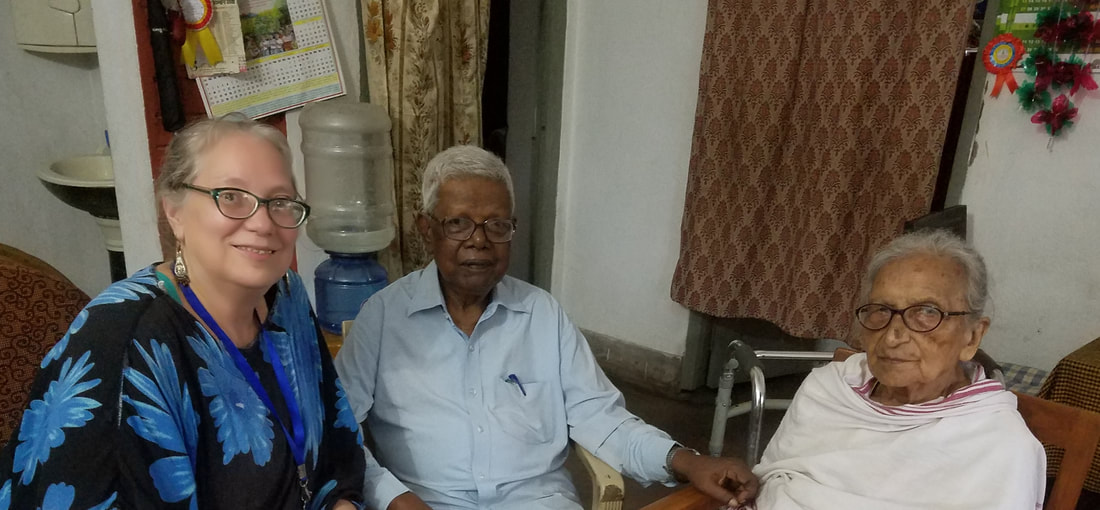
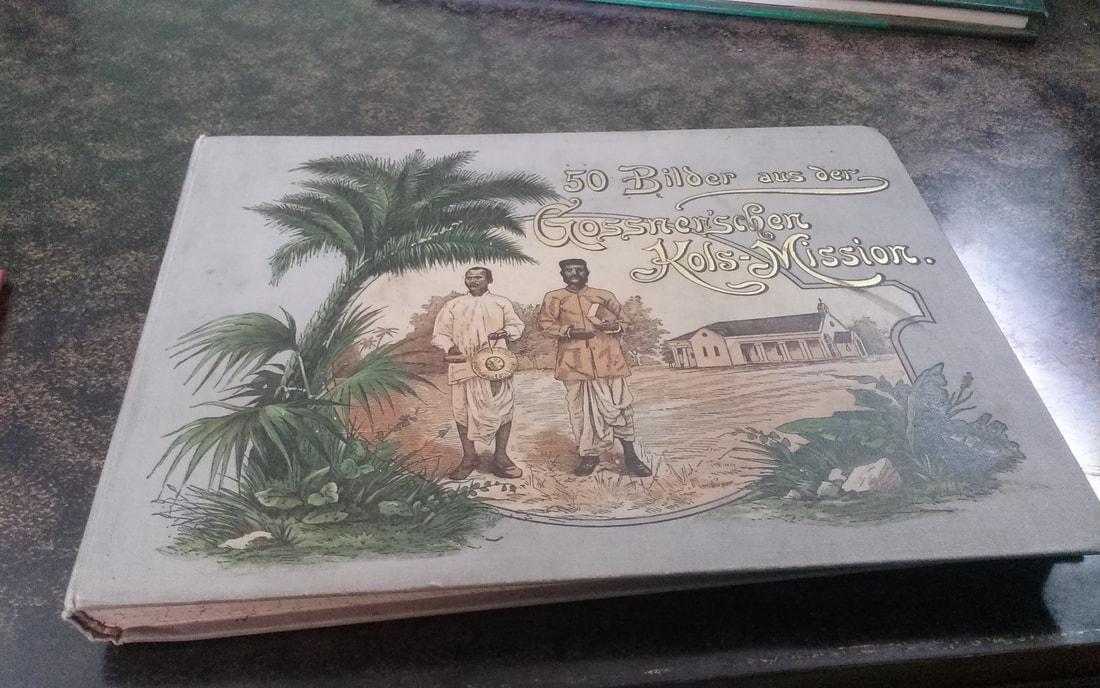
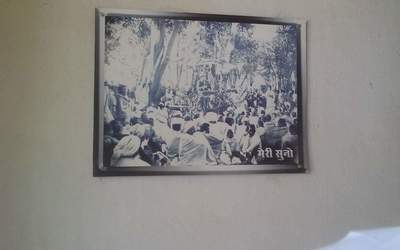
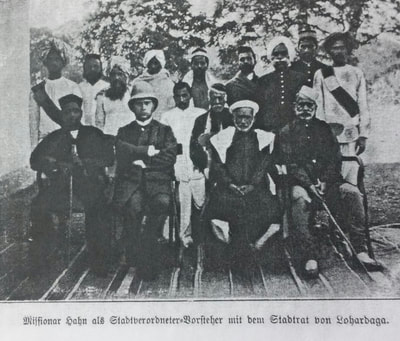
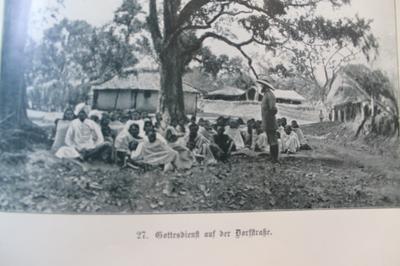
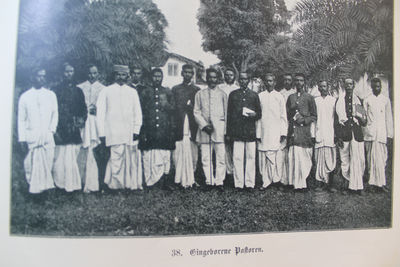
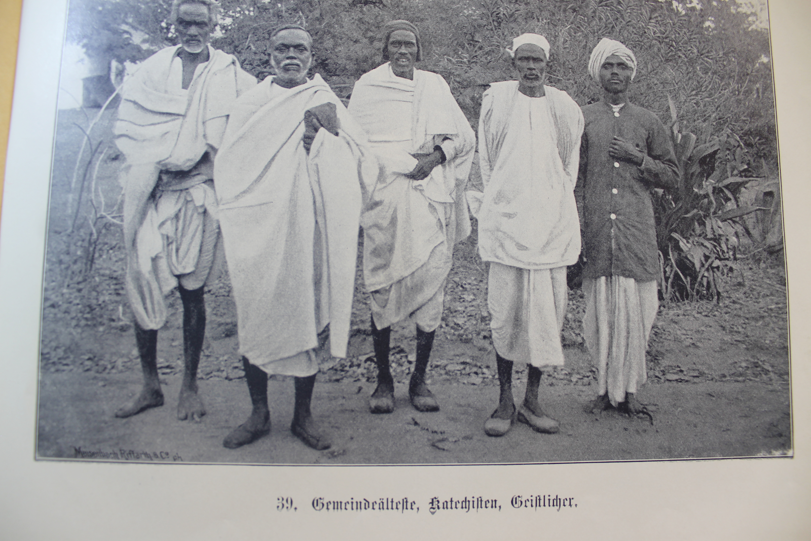
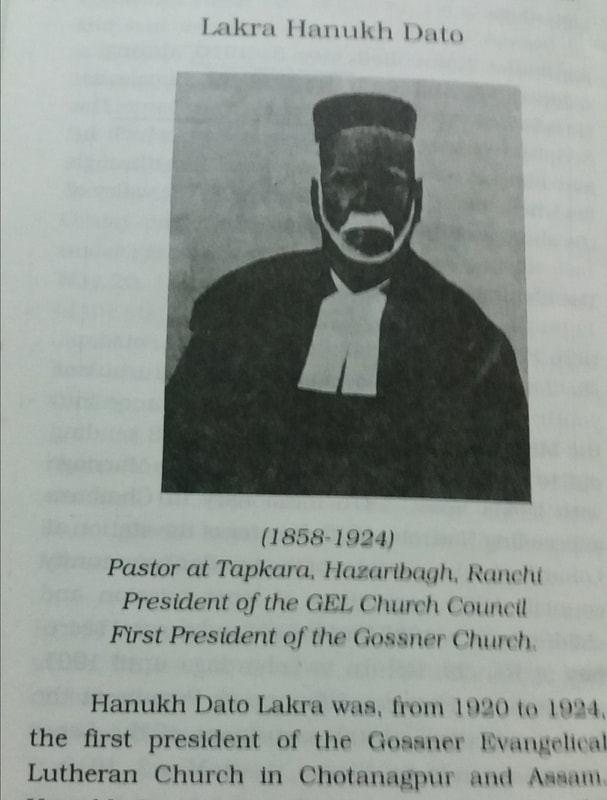
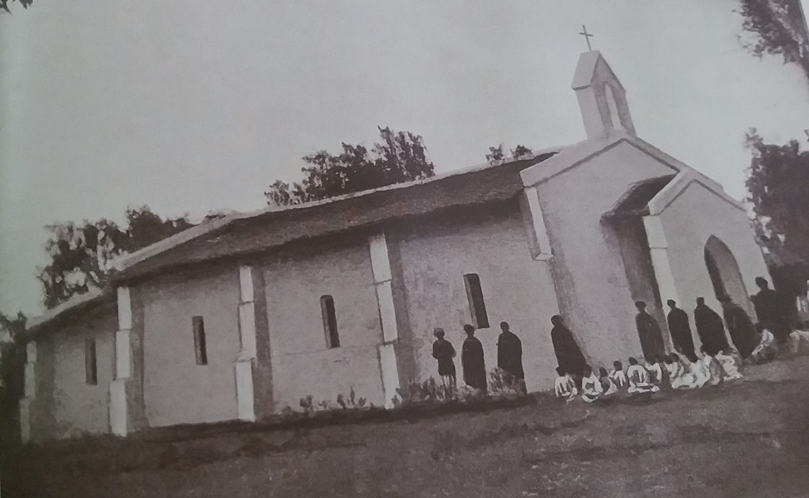
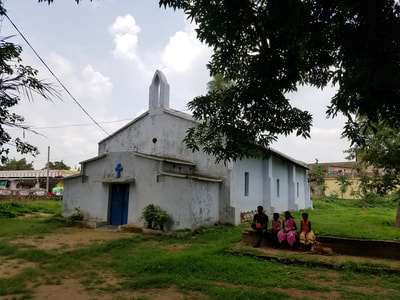
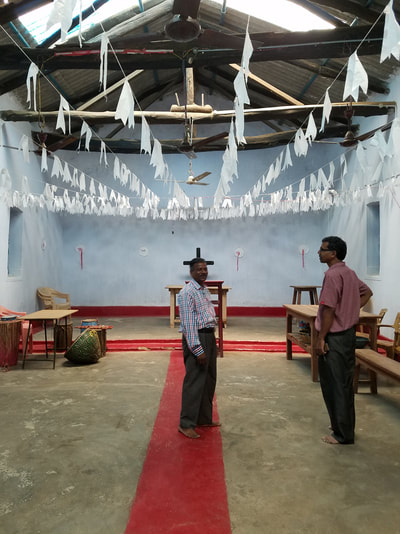
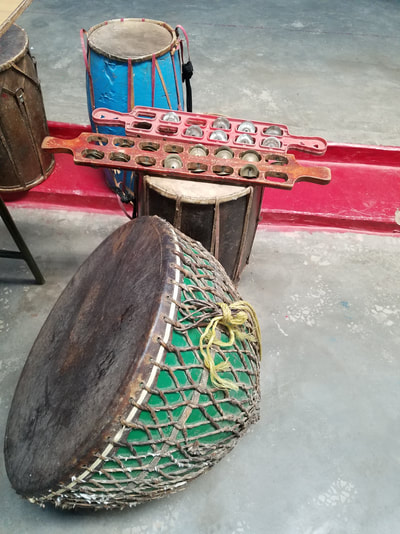
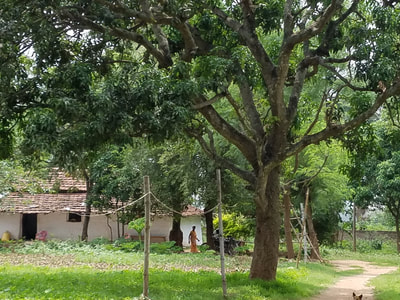
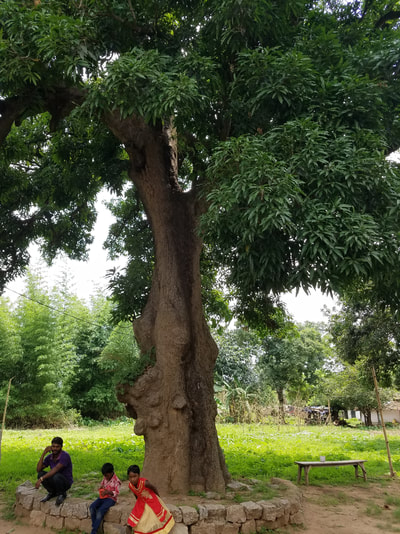
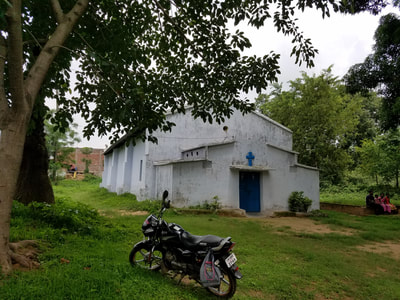
 RSS Feed
RSS Feed